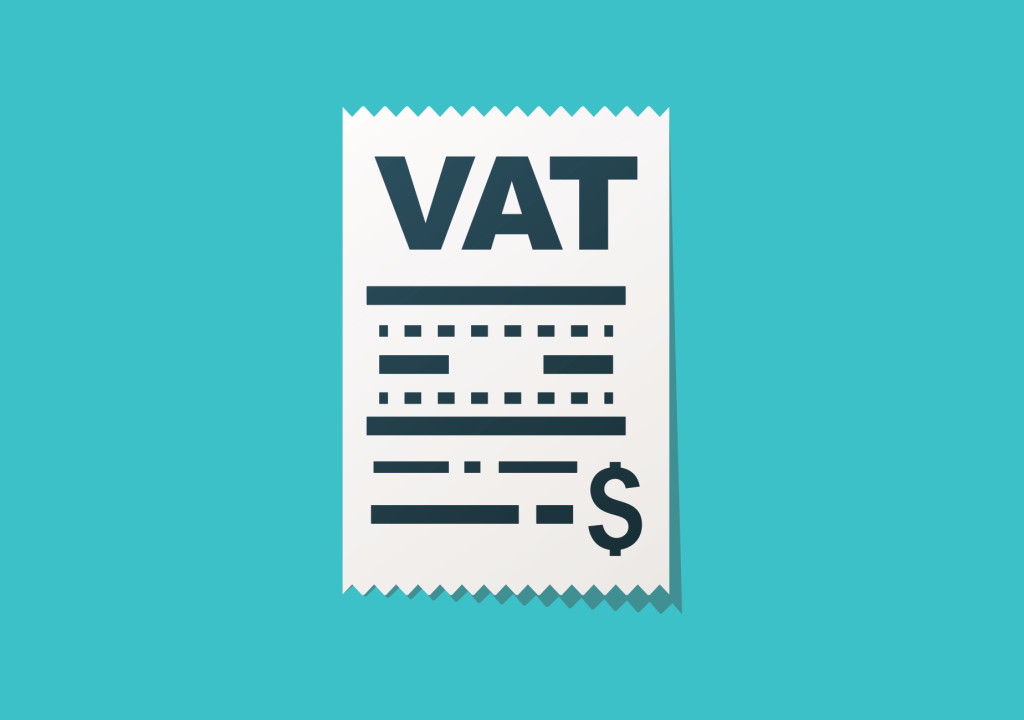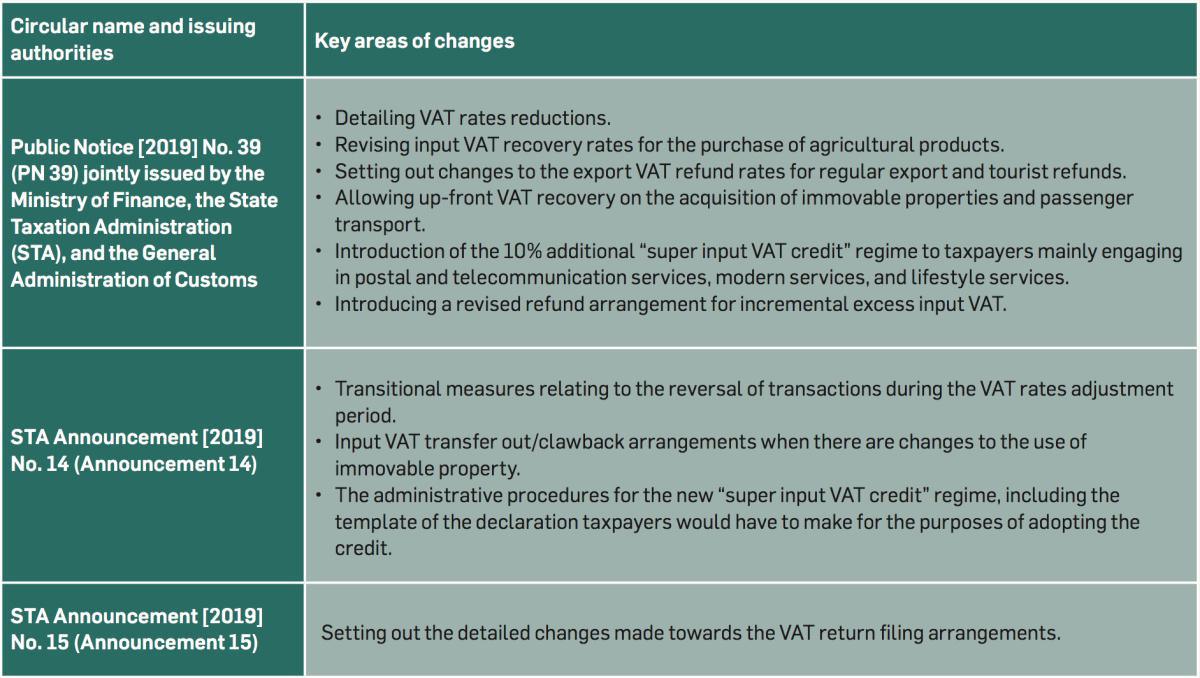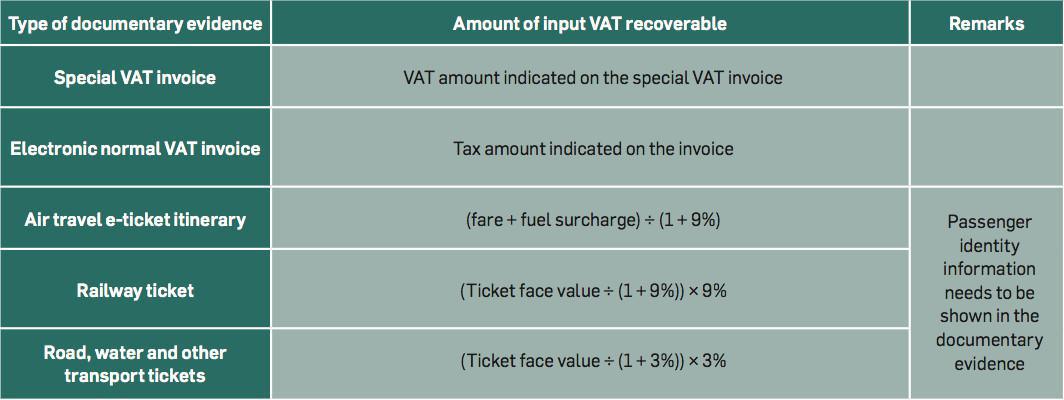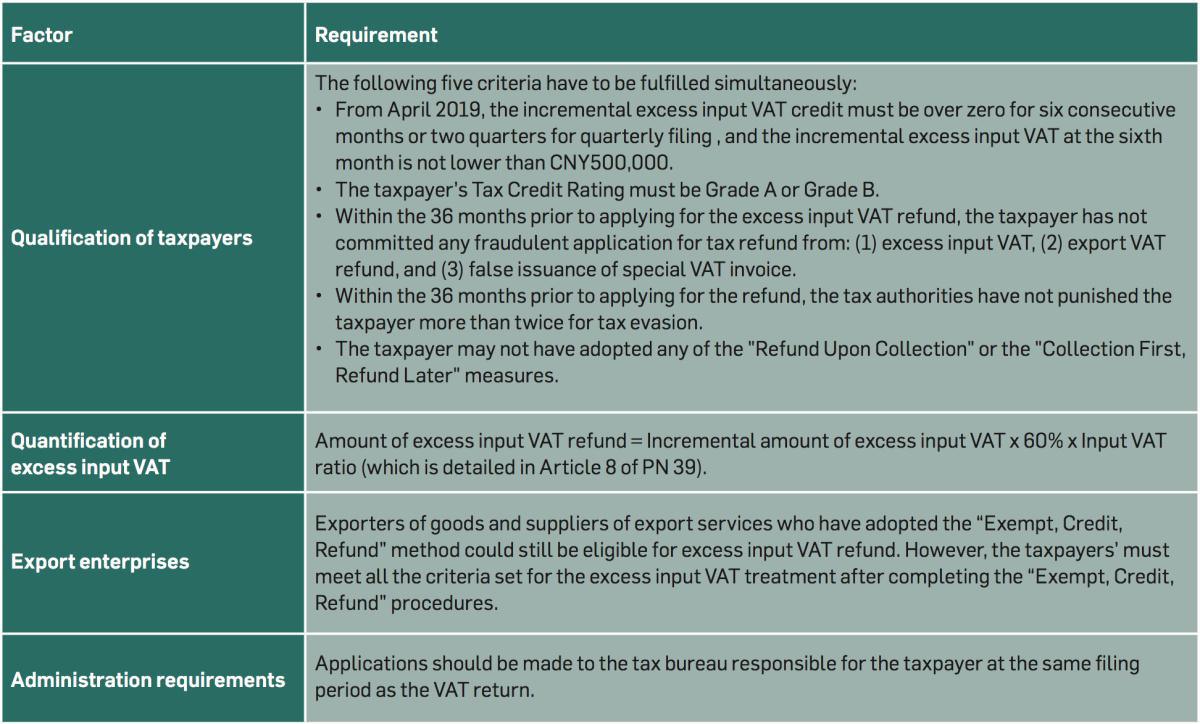Since the start of 2019, Chinese authorities have issued a suite of tax circulars which set out groundbreaking value added tax (VAT) rules to help implement the decision made by the State Council to re-energize the Chinese economy.
The key features of the circulars are summarized in Table 1 below.
Economic rationale behind the VAT measures
The master plan for the changes was first unveiled in the Report on the Work of the Government 2019 on 5 March by Premier Li Keqiang. The report made clear that the key purpose for the VAT changes is to stimulate sustainable economic growth by lightening the tax burden. It is expected that the tax savings generated by the reforms would ultimately help re-energize private consumption.
One important point to note is the well-received statement, “the tax burden for all industries should be reduced – not increased,” was reiterated in the Premier’s announcement. This demonstrates the government’s continued efforts to implement tax reductions. It has been reported that the government has budgeted CNY2 trillion to fund the VAT changes and other tax reduction measures such as social security changes.
Significant VAT rates adjustments
Public Notice [2019] No. 39 (PN39) set out reducing the VAT rates of 16 percent and 10 percent to 13 percent and 9 percent respectively. The details of the five applicable VAT rates are in Table 2.
While the business community generally welcomes the significant VAT rates reduction and is excited about the benefits of these measures, some business arrangements could face pressure due to increased VAT expenses and reduced margins.
The new “super input VAT credit” regime
From 1 April 2019 to 31 December 2021, taxpayers providing the following four “qualifying services” are entitled to an additional 10 percent super input VAT credit:
- Postal services,
- Telecommunication services,
- Modern services, and
- Lifestyle services.
PN 39 sets out the follow conditions to be met before obtaining this credit:
- Taxpayers need to submit a “Declaration on Adopting Super Input VAT Credit Policy” through the Online Electronic Tax Office.
- Sales revenue generated from the applicable services needs to exceed 50 percent of the taxpayer’s total sales revenue.
- The 10 percent additional super input VAT credit is computed based on the amount of recoverable (not total) input VAT.
- The credit is not available to taxpayers making export sales of goods or providing cross border services. This is because the regime cannot distinguish between these export services and the taxpayer’s domestic supply of services.
- Excess super input VAT credit can be carried forward to the next VAT return period, up to the last return period ending 31 December 2021.
Expansion and acceleration of input VAT recovery
PN 39 set out three input VAT recovery changes.
Accelerate input VAT recovery to the acquisition of immovable properties
Under the previous VAT rules, taxpayers were required to split the recovery of input VAT incurred on the acquisition of immovable properties over two years, with 60 percent recovered in the rst year and the remaining 40 percent in the second year. PN 39 enables a one off VAT recovery (i.e. in the month of purchase) of the input VAT incurred for the purchase of immovable property.
STA Announcement [2019] No. 14 (Announcement 14) sets out the detailed rules for input VAT transfer out/clawback arrangements when there are changes to the use of immovable property (e.g. the immovable property has changed from taxable use to VAT-exempt use).
Expanding input VAT recovery for domestic passenger transportation services
Under the previous Chinese VAT rules, there were specific provisions denying the recovery of input VAT. One of these was related to the costs associated with passenger transport. This input VAT disallowance applies even in the case where the passengers in question are employees of the business and the travelling arrangements are solely made for business purposes.
The business community has often, over the years, suggested relaxing this input policy and PN 39 has facilitated a breakthrough. From 1 April, taxpayers are allowed to recover input VAT when they have collected specific documentary evidence for the travel expenses (see Table 3 below).
As set out in the State Taxation Administration (STA) Q&As, taxpayers cannot recover input VAT from taxi receipts as the identity of the passenger is not included. Input VAT can only be recovered for the employees of the taxpayers. VAT incurred on expenses for business purposes but not on the employees (e.g. flight costs paid towards the speakers’ airfares for staff training) would not be recoverable.
Businesses need to review their procurement and expenses processes and procedures in order to bene t from the new input VAT rules. Large businesses typically engage travel management companies to arrange their travel. Taxpayers would need to start communicating closely with their service providers – either the transportation service providers or the travel agents/travel management companies – in order to ensure the types of documents required to support the input VAT credit can be obtained.
Businesses also need to revise their staff expense reimbursement processes in order to properly and efficiently capture the input VAT of the travel costs paid by their staff for accounting and VAT filing purposes.
Revision to the incremental excess input VAT refund treatment
PN 39 set out rules for the incremental excess input VAT refund regime which came into effect 1 April. The key features are detailed in Table 4 below.
PN 39 is silent as to the exact month the incremental excess input VAT refund application could be made. Following the six-month period rule, we consider the first refund application could be made in October 2019. PN 39 is also silent whether, when, and how taxpayers can make their second application after they have successfully obtained the first refund. We expect more clarification on the procedures related to the first and subsequent applications from tax authorities before October.
In many jurisdictions which operate a VAT regime, refunds would be given to taxpayers when the amount of input VAT incurred over the VAT filing period is higher than the output VAT. However, China has been adopting a different approach by only allowing taxpayers to carry forward the excess input VAT balance to the new VAT return period. Previously, there has been limited relaxation of excess input VAT refund applications, and in 2018, the Chinese tax authorities made another attempt at widening the refund regime by enabling taxpayers in 18 sectors to apply for excess input VAT refund when certain conditions are met, as detailed in Caishui [2018] No. 70.
The revision to the excess input VAT refund policy is welcomed by the business community as the refund can relieve VAT cash ow stress, particularly for taxpayers who consistently have higher input than output VAT (e.g. such as a multi-phased real estate project company having sales or rental income from earlier phases of the project but continuing to incur construction costs over six months for a close-to-completed later phase). Taxpayers should review whether they could utilize their input VAT soon enough or they would need to apply the incremental excess input VAT refund policy in order to gain VAT cash flow benefits.
Revision to the VAT return form
In light of the significant changes, the STA issued STA Announcement [2019] No. 15 (Announcement 15) to refresh the VAT return form, with changes made to the main form as well as appendices 1, 2, 3 and 4.
Announcement 15 also waived the requirement for taxpayers to complete Appendix 5 and the Tax Burden Analysis Form.
Taxpayers should study Announcement 15 and its explanatory note in detail before submitting their first VAT return after 1 May.
Conclusion
The new VAT policy should undoubtedly be welcomed by the business community. However, implementing the changes within a short window of time is going to be challenging for businesses given the VAT regulatory and business changes that are going to take place. It is advised that suitable resources be dedicated and actions planned (see Table 5 below) to convert their business operations in response to the changes.
Table 5 – Actions businesses should undertake 
Kenneth Leung is Greater China Indirect Tax Leader at EY.




















